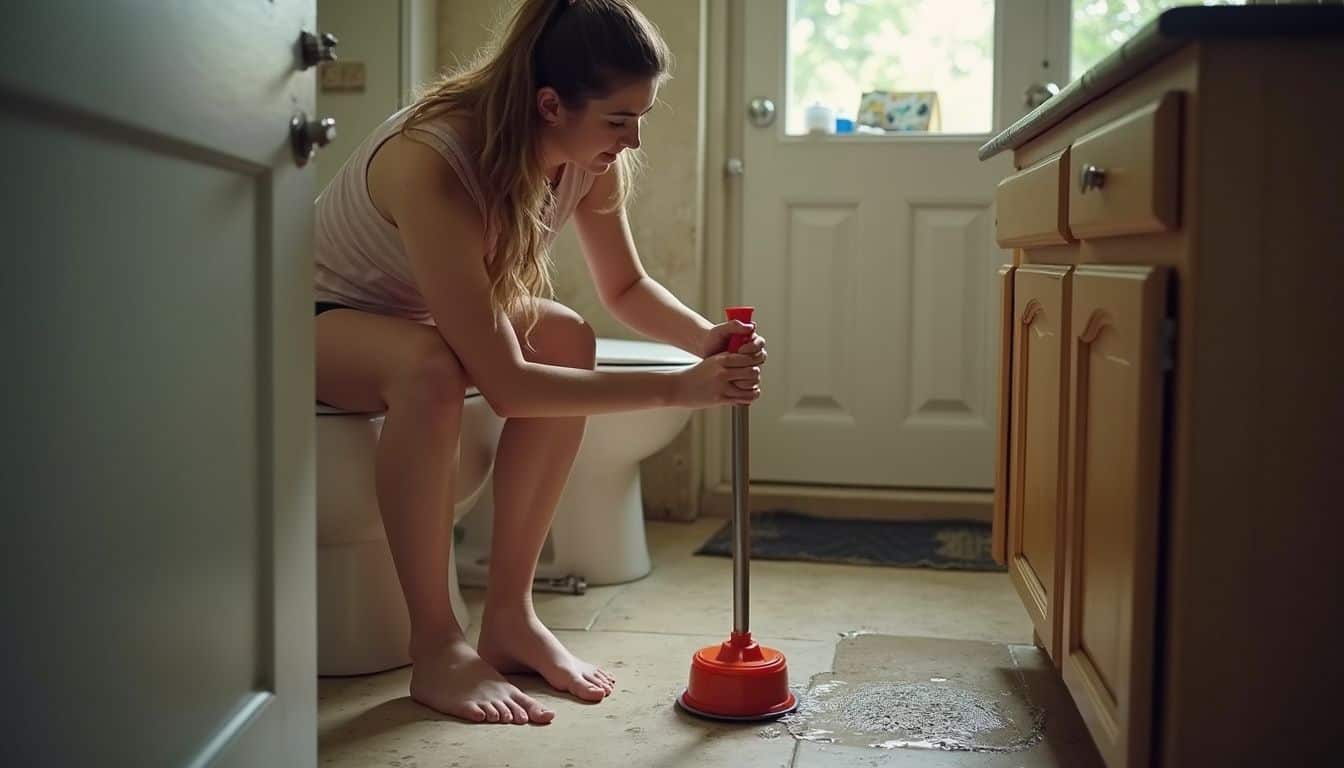Standing water around your feet is annoying and unsanitary. A clogged shower drain is usually easy to fix with simple tools and safe household steps. This guide shows seven methods that work, so you can unclog a shower drain without stress.
You will learn what to try first, what to avoid, and when to call a pro. Start with the easiest steps, then move up only if needed.
Key Takeaways
Take off the drain cover, then pull visible hair and soap scum with a hook, tweezers, or needle-nose pliers.
Use a baking soda and vinegar solution, let it fizz for 30 minutes, then flush with hot water to clear most organic clogs.
Try a plunger for pressure or a plumber’s snake for deep blockages. Short, strong plunges or slow, careful twisting usually restore flow.
If using a chemical drain opener, wear gloves and goggles, ventilate the room, and follow the label exactly.
Slow drains in several fixtures can signal a main sewer issue. Call licensed plumbers such as Lochard HVAC & Plumbing at 937-492-8811.
Table of Contents
How do you remove visible debris from a shower drain?

Start by lifting the drain cover. Look for hair, soap film, and lint that block water flow.
Put on rubber gloves. Bend a wire hanger into a small hook or use pliers to pull out clumps. A flashlight helps you see deeper into the pipe.
Dispose of the debris in the trash, not the toilet. Rinse the area with hot water to test flow.
How do you take off the drain cover safely?
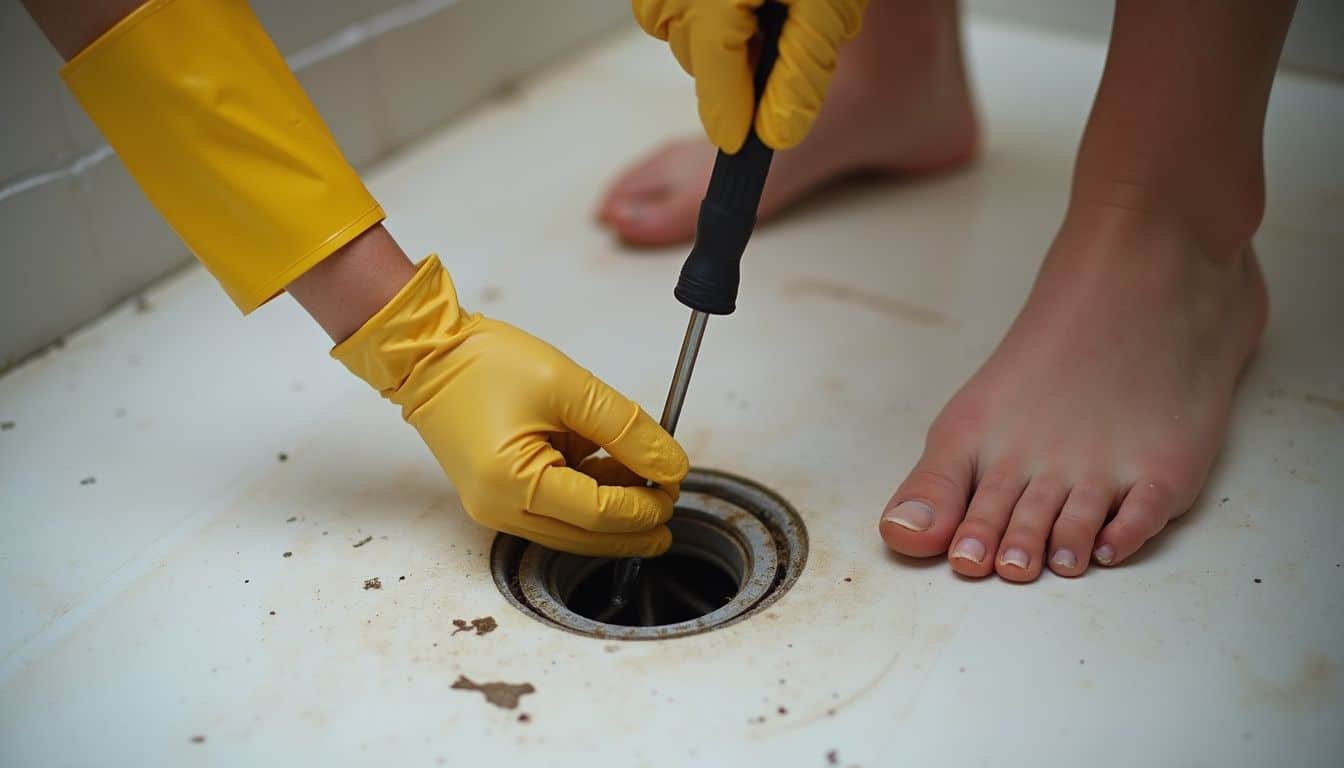
Let standing water drain before you start. Dry the floor to prevent slips. Wear gloves to protect your hands from sharp edges.
Check how the drain cover attaches. Some lift straight up. Others have screws or small clips.
Use the right screwdriver to avoid stripping screws. If the cover sticks, apply gentle pressure instead of forcing it. Avoid cracking plastic parts or scratching PVC pipes.
Keep removed screws in a small cup so they do not get lost. If your cover is a special style, follow the maker’s directions.
For guidance on tricky covers, see this drain unblocking expert in Essex. Once the cover is off, you are ready to remove hair and soap buildup with simple tools.
What tools can you use to remove hair or soap scum?
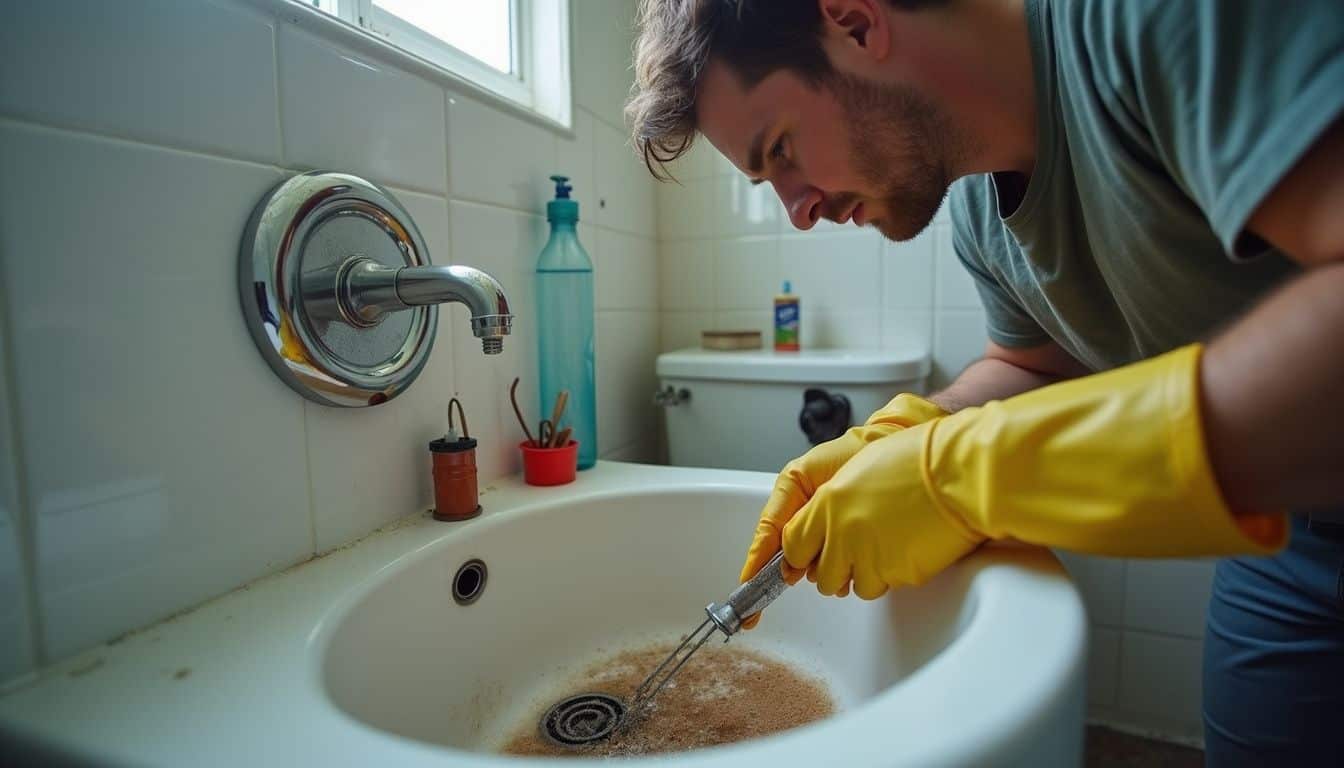
Use rubber gloves first. Grab any hair you can reach. A bent coat hanger, tweezers, or needle-nose pliers can snag deeper clumps.
Shine a light down the pipe to spot hidden buildup. If you cannot reach it, switch to a plumber’s snake or hand auger. These tools break up or pull out stubborn clogs.
Boiling water can help melt greasy soap film in metal pipes. Never use boiling water on PVC pipes because heat can warp plastic and cause leaks. Warm to hot tap water is safer for plastic plumbing.
For prevention, place a hair catcher over the opening. It traps strands before they enter the pipe, which keeps drains clear longer.
How does pouring boiling water help unclog a drain?

Boiling water softens soap scum and grease that hold hair together. This makes the clog easier to flush away with a steady stream.
Use boiling water only on metal pipes. PVC pipes can soften or weaken with extreme heat. For plastic, use hot tap water instead.
Pour slowly in two to three rounds, letting it work between pours. Then run the shower to check the flow. If needed, pair this step with baking soda and vinegar for extra power.
Pouring very hot water can dissolve sticky buildup and help keep your drain clear, notes Angie Hicks of Angi.
What is the best way to use baking soda and vinegar for drain cleaning?
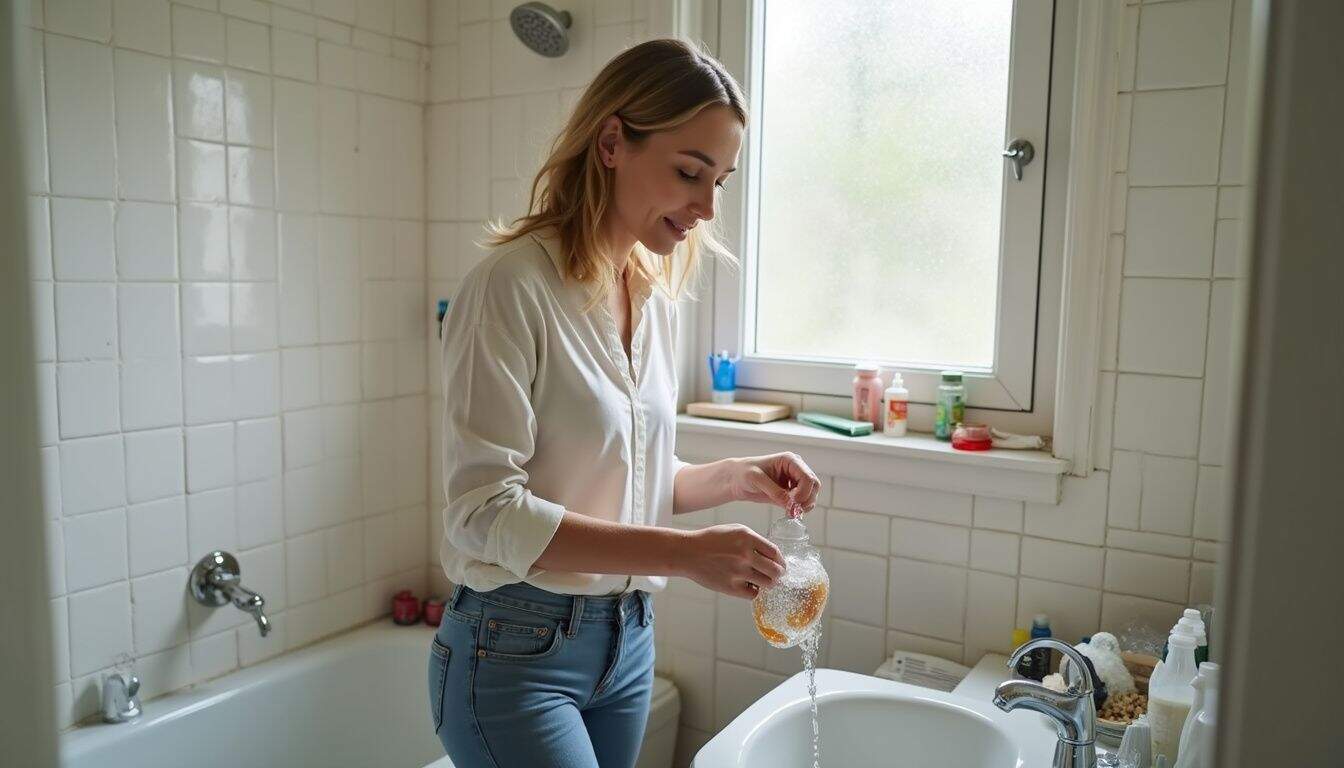
Baking soda and vinegar make a fizzy reaction that helps break down hair and soap film. It is a gentle option compared to strong chemical drain cleaners.
How do you add baking soda and vinegar to the drain correctly?

Remove the cover. Pour one cup of baking soda into the drain. A measuring cup or funnel helps prevent spills.
Pour one cup of vinegar slowly into the same opening. The fizz will start right away. Plug the drain with a cloth or stopper to keep the reaction inside the pipe.
Use a heat-safe cup if you plan to follow with hot water. This mix often clears a shower drain without harsh products.
How long should you wait before flushing with hot water?
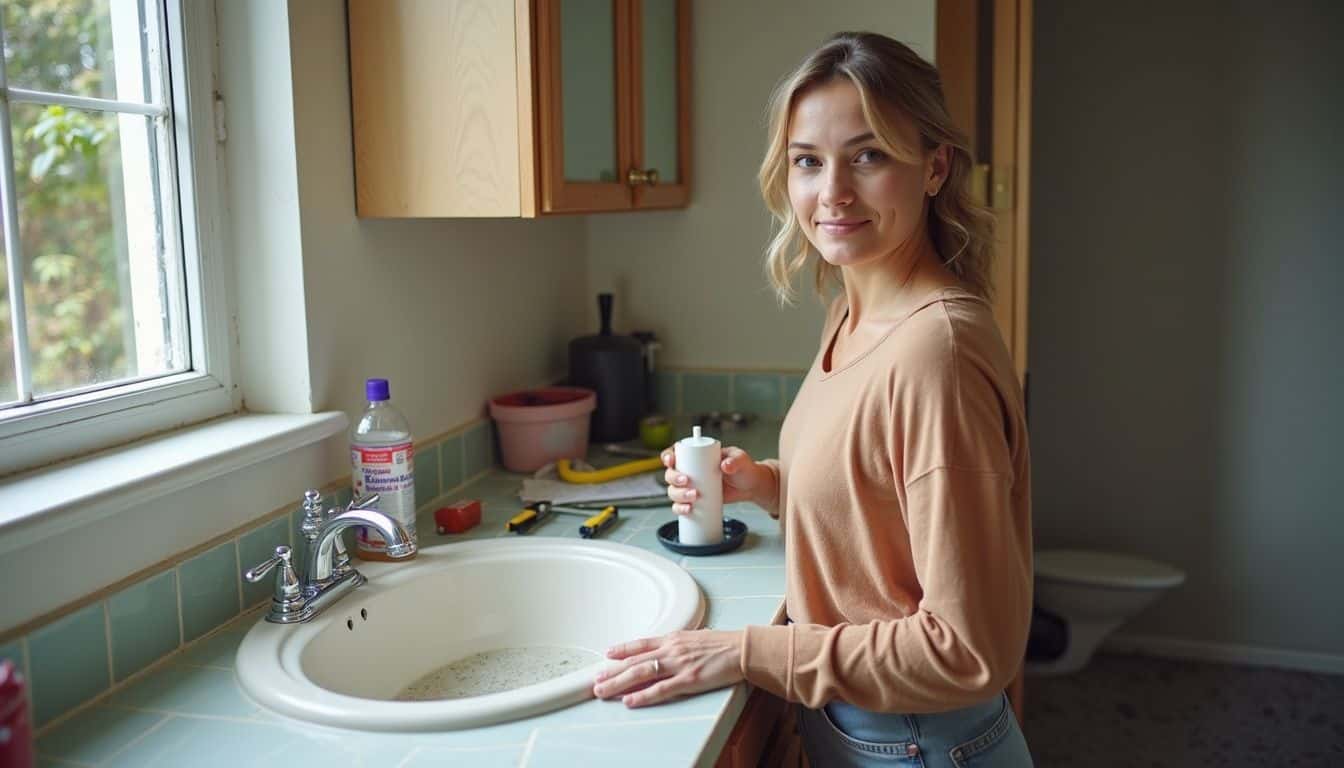
Let the mixture work for 30 minutes. For heavy hair clogs, wait up to an hour. The fizz has more time to loosen grime.
When bubbling slows, wait five more minutes. Then flush with very hot water to push away loosened gunk. Use boiling water only on metal pipes, not on PVC pipes.
Letting the mix bubble before flushing works wonders on slow drains, says Mia from Denver.
If flow is still slow, repeat once or follow with a drain snake. Do not mix this method with any chemical cleaner on the same day.
How do you use a plunger to clear a shower drain clog?
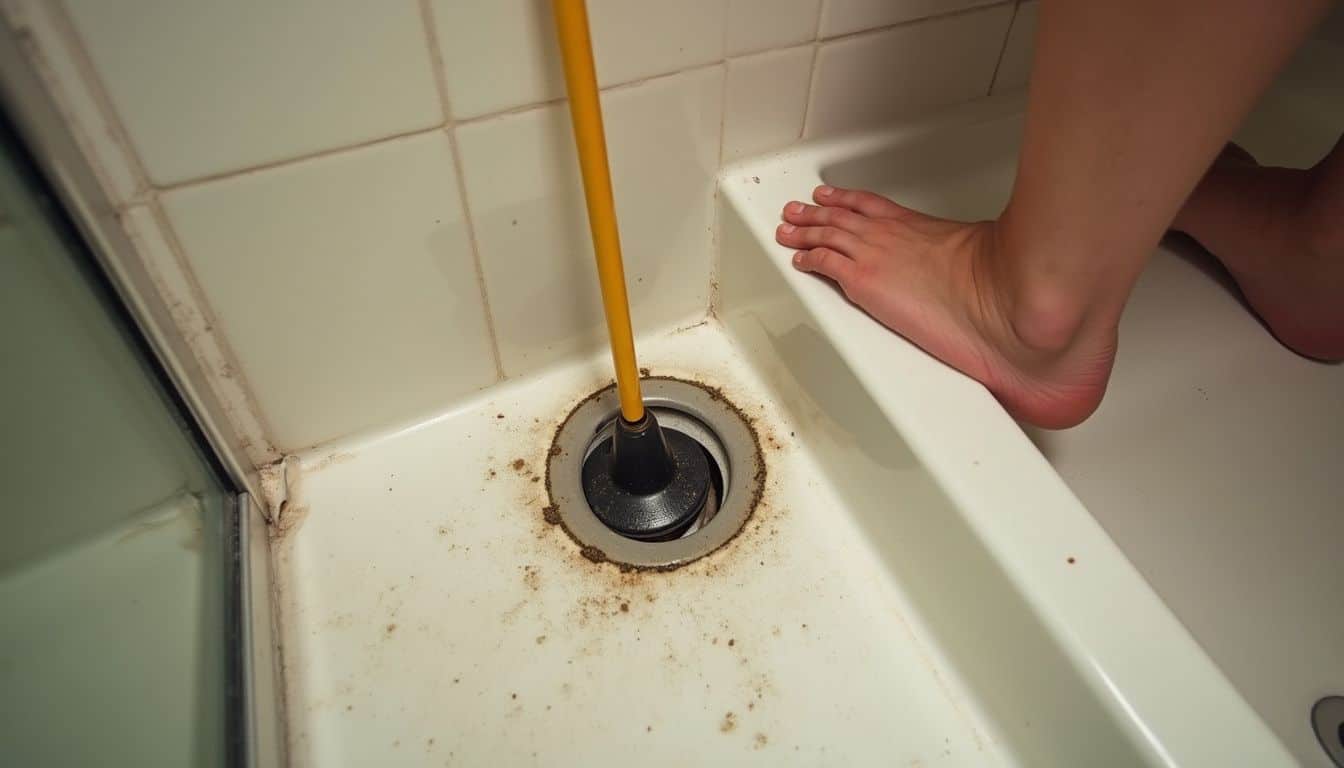
A plunger can move a stubborn clog with water pressure. It is quick, cheap, and safe for most drains.
How do you create an effective seal with the plunger?
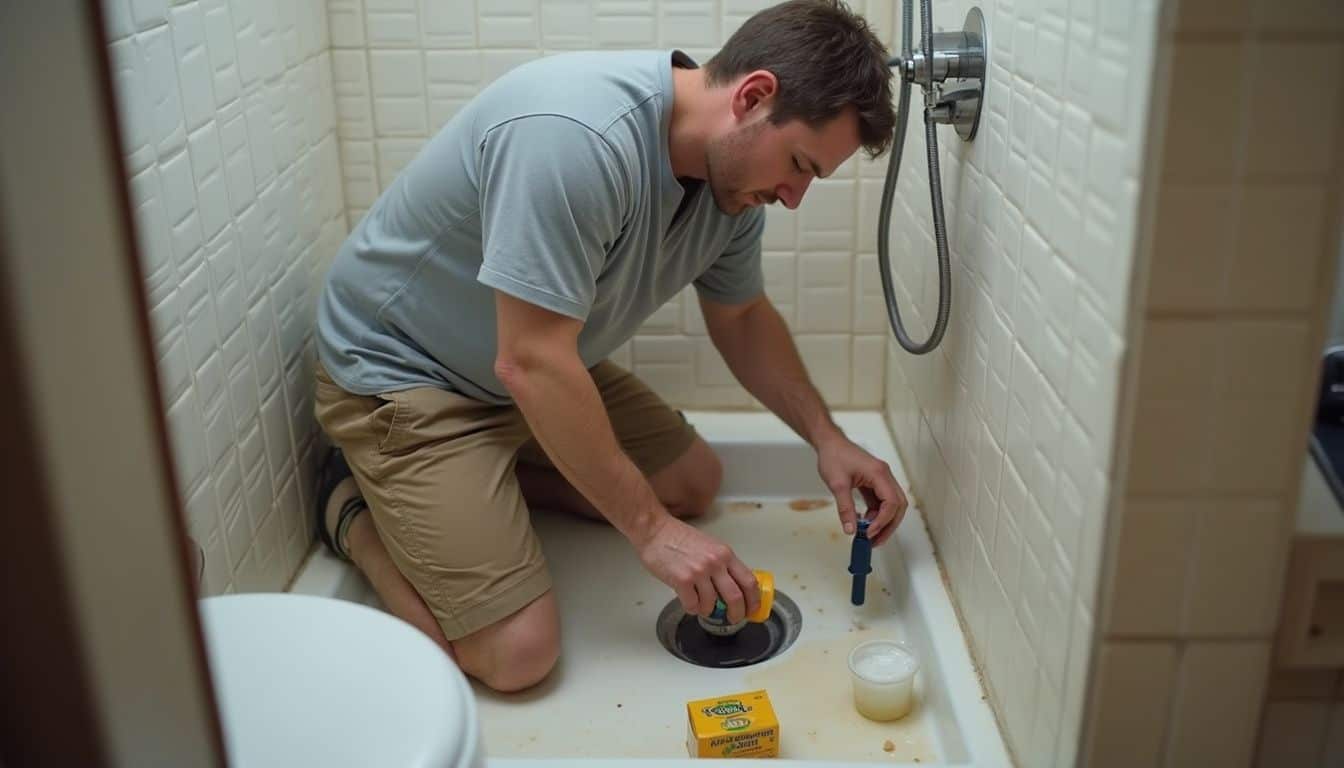
Use a cup-style plunger. Place the rubber cup over the drain opening after removing the cover. Spread a thin layer of petroleum jelly on the rim to boost suction.
Add enough water to submerge the rubber lip. Press down to remove air gaps. If your shower has an overflow opening, block it with a wet cloth to increase pressure.
Check the seal. Even tiny air leaks reduce power. A tight seal sets you up for faster results.
What is the proper plunging technique?
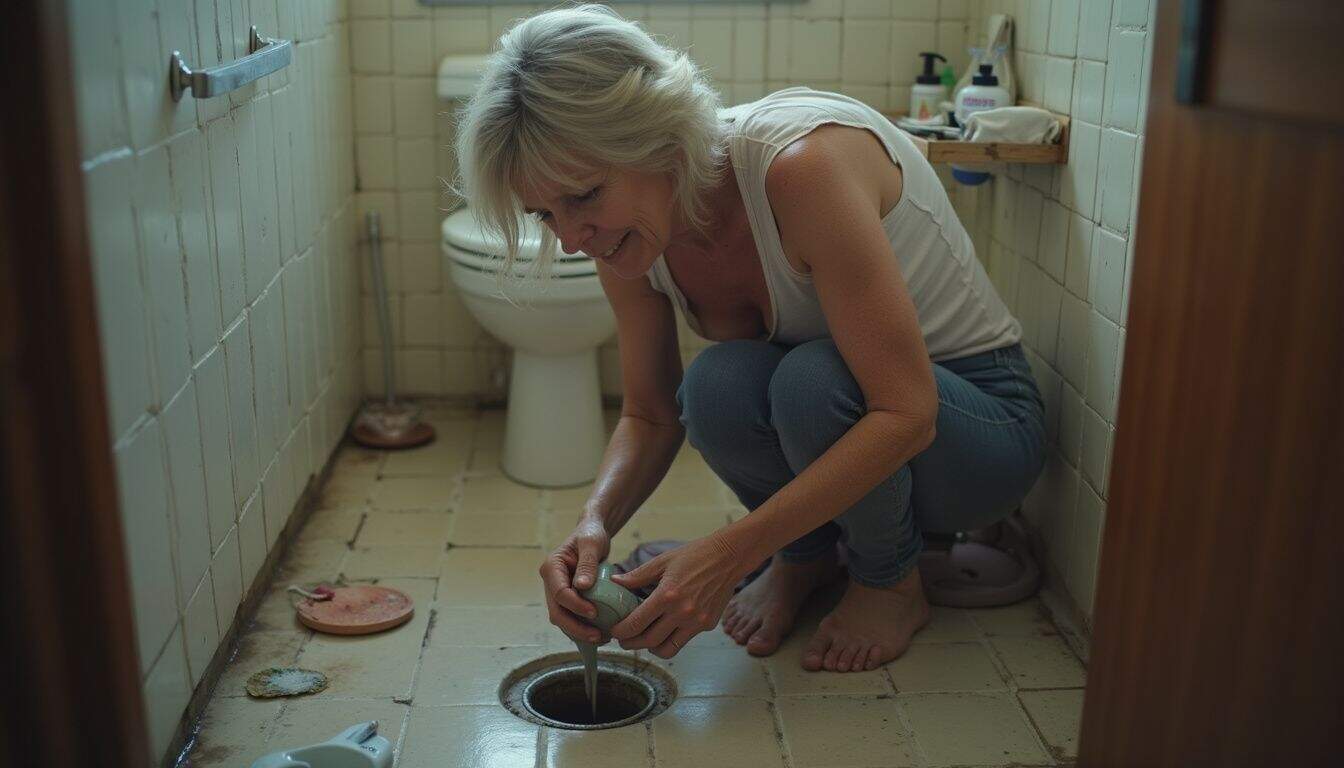
With a tight seal, use short, rapid strokes. Pump 15 to 20 times to move water and air through the clog.
Lift the plunger to see if water drains fast. Repeat if needed. Combine with manual hair removal if flow only improves a little.
Do not plunge right after using chemical drain cleaners. They can splash and burn skin.
Strong, quick plunges cleared my shower faster than slow ones, says Sarah from Austin.
If several rounds fail, switch to a plumber’s snake or call a pro. Forcing the issue can damage pipes.
How do you use a plumbing snake to break up clogs?

A plumbing snake, also called a drain auger, is a flexible cable with a tip that breaks or grabs clogs. It reaches deeper than your fingers or a hanger.
Feed the cable into the drain until you feel resistance. Then turn the handle to snag hair or drill through the blockage.
How do you insert and rotate the snake properly?
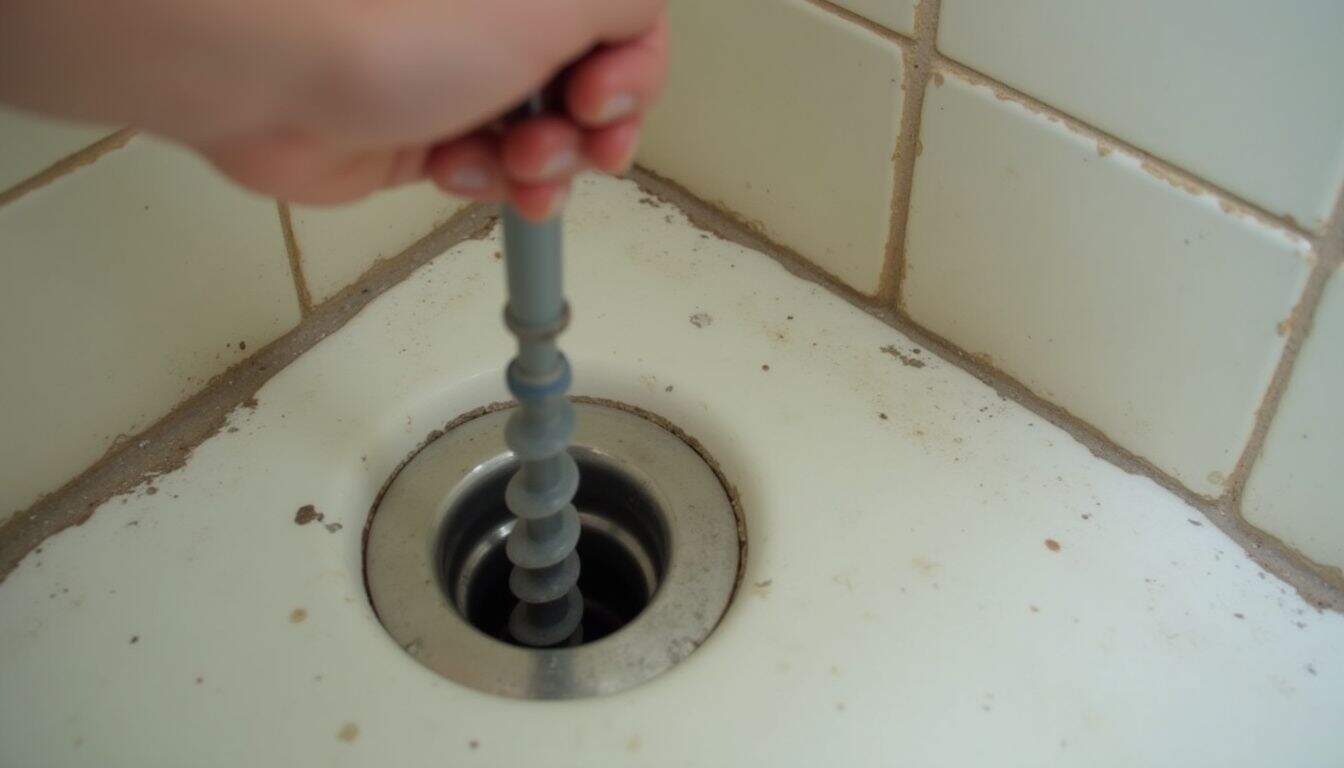
Extend the cable six to twelve inches at a time. Lock the collar after each push so the cable does not slip back. Keep one hand on the tool body, a few inches from the drain, to guide it.
Rotate the handle with steady pressure. If the cable kinks or binds, stop and reverse a little. Pushing too hard can tangle the cable or scratch pipes.
When resistance eases, pull the snake out slowly. Wipe off hair and grime from the tip. Run hot water to test the drain.
Need extra guidance? See comprehensive drain cleaning methods for more detail.
When should you use a chemical drain cleaner and how?
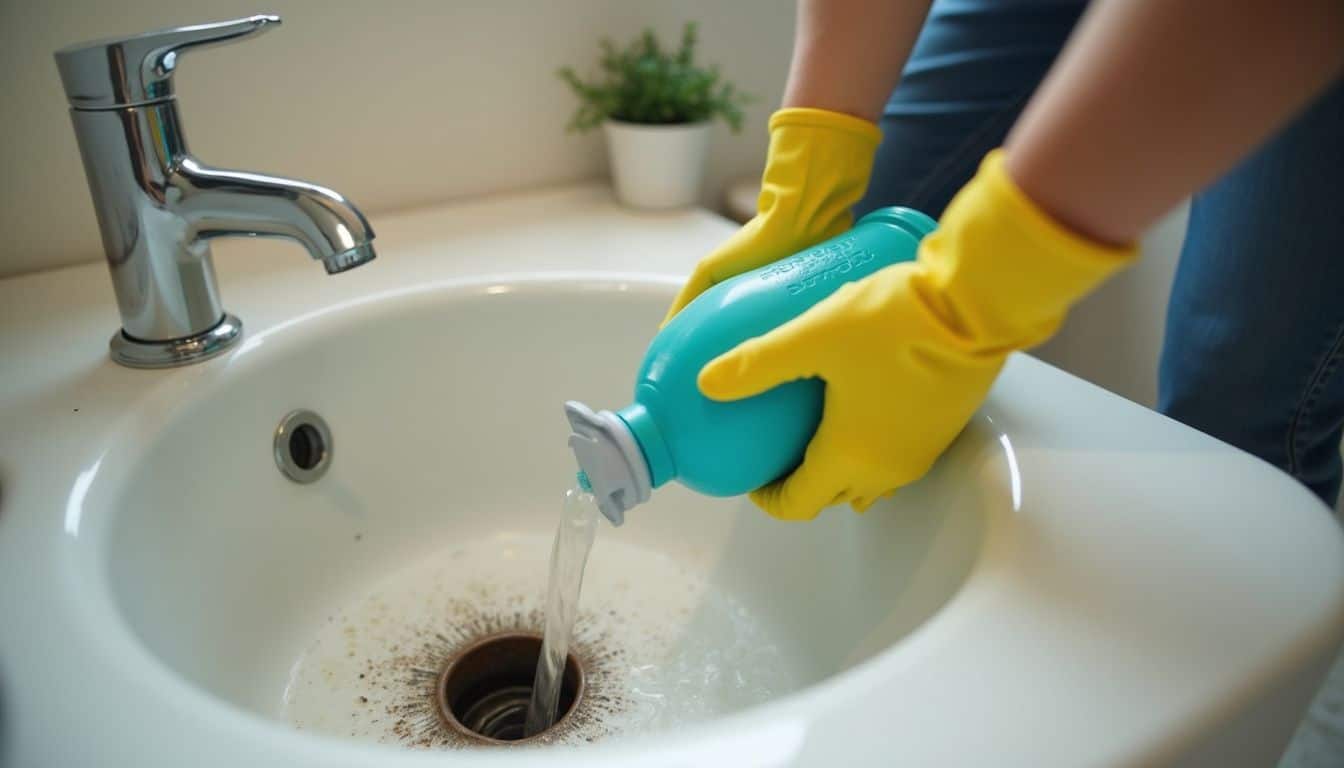
Use a chemical drain opener only after safer steps fail. Products like Drano or Liquid-Plumr can work on tough soap and hair clogs, but they carry risks.
Read the label first. Never mix products. Never use them with a plunger or vinegar on the same day.
What precautions should you take when using chemical cleaners?
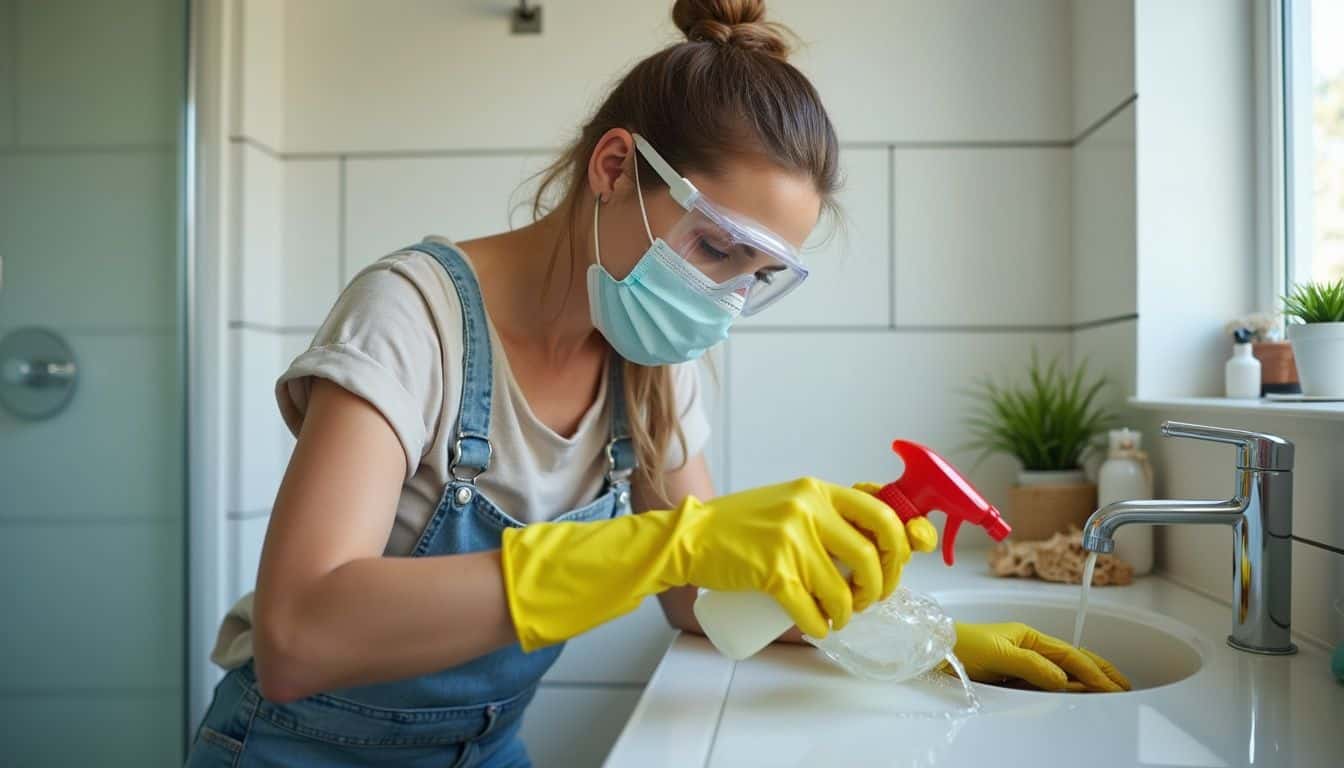
Put on safety goggles, rubber gloves, and a mask. Ventilate the bathroom with a window or exhaust fan.
Pour only the amount listed on the label. Extra product does not work better and can damage PVC or metal pipes over time.
Do not mix cleaners with bleach or ammonia. Dangerous fumes can form. Wait the full time on the label before rinsing.
Tell your plumber if chemicals were used. This keeps everyone safe during any repair work.
When is it time to call a professional plumber?

Call a professional plumber if the drain stays slow after the steps above. Black sludge or sewage backing up is an urgent sign of a deeper blockage.
Multiple slow fixtures at once often point to a clogged main sewer line. That problem needs special tools like long drain snakes and cameras.
Local teams such as Lochard HVAC, Plumbing, and Service help families in Troy, Piqua, Sidney, Bellefontaine, Tipp City, and West Milton. Call 937-492-8811 for fast support.
The Home Depot can connect you with licensed plumbers in your area. National services such as Mr. Rooter Plumbing also offer clear pricing. Trying fix after fix can damage pipes, so get help before the issue grows.
Persistent clogs and sewage backups need expert attention right away, say the local pros at Lochard HVAC & Plumbing.
How can you prevent future shower drain clogs?

Small habits keep drains flowing. A few low-cost tools and a simple routine prevent most clogs.
Why should you install drain covers?

Drain covers catch hair and grit before they reach the trap. Less debris in the pipe means fewer clogs and fewer headaches.
I use a silicone hair catcher at home. Water no longer pools around my feet during showers.
Covers are inexpensive and easy to clean. Lift, wipe, and rinse every few days. This simple step helps protect your plumbing system.
How often should you clean the drain to avoid clogs?
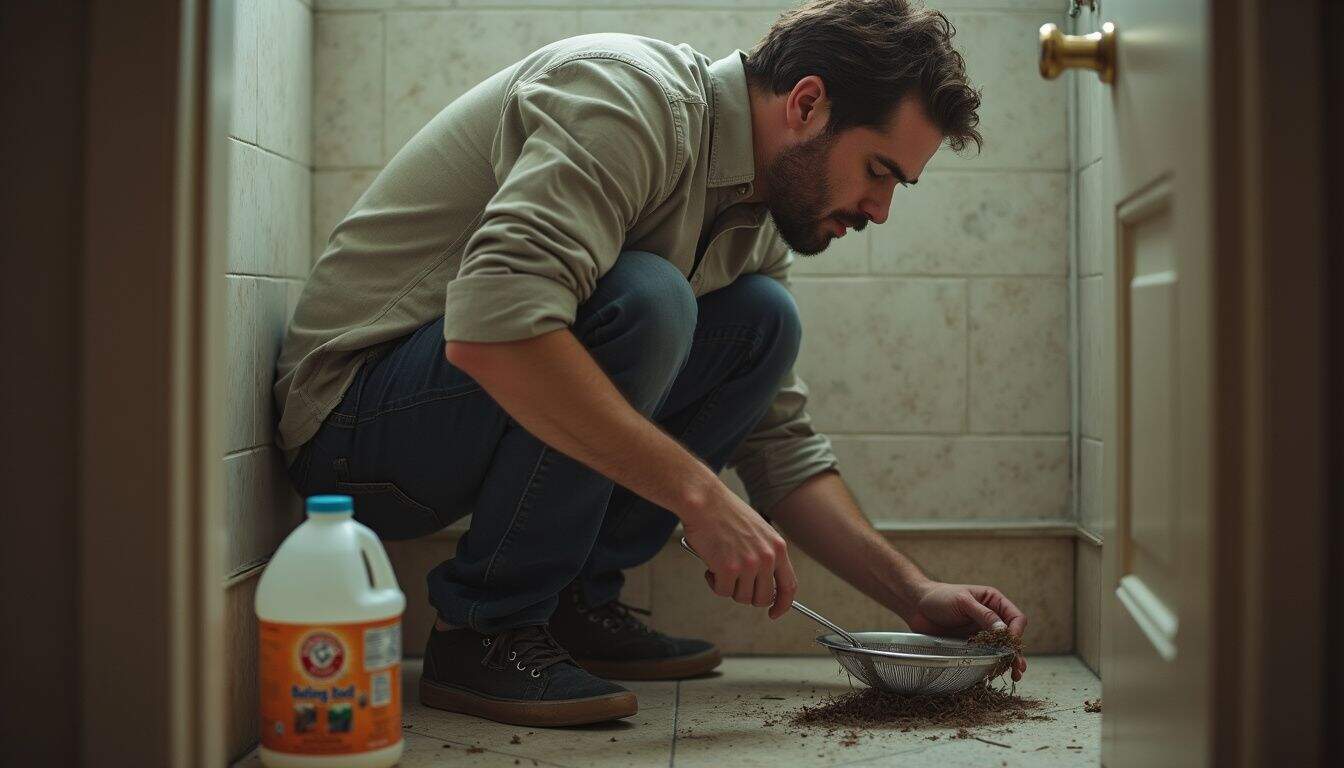
Clean the shower drain monthly to avoid buildup. Flush with boiling water if you have metal pipes, or with hot tap water for PVC pipes. A monthly baking soda and vinegar rinse helps keep soap film in check.
Empty and rinse the hair catcher twice a week, especially with long hair. Clearing visible gunk right away keeps water moving.
Tools like mesh strainers or silicone covers from brands such as TubShroom catch most strands. Keeping them clean makes every shower drain last longer between deep cleanings.
How Will Shower Drain Cleaning Technology and Methods Evolve in 2025?
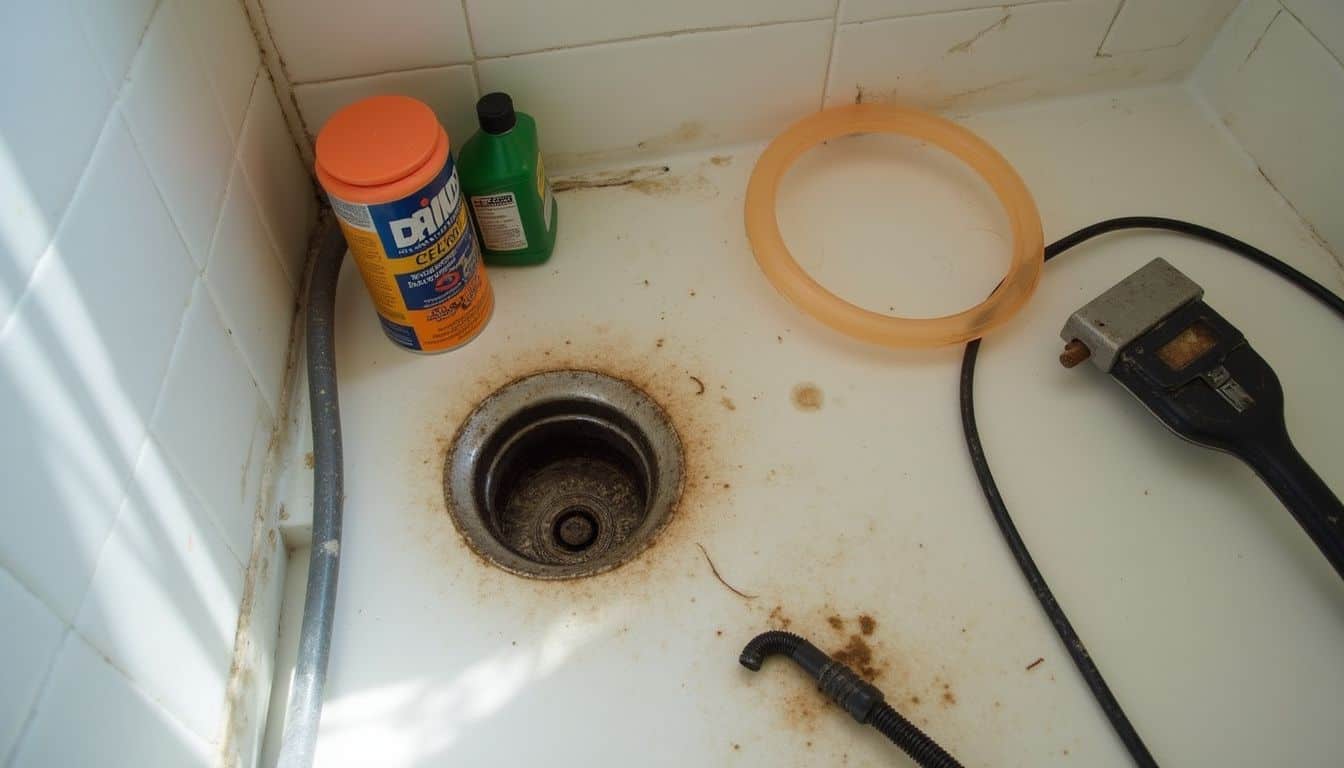
Expect easier tools in 2025. Barbed plastic snakes will get sturdier. Small CO2 pushers may offer better control for at-home use.
More companies are testing enzyme-based cleaners that break down hair and soap safely. These formulas aim to protect pipes while cutting odors.
Budget gear like shop vacs and hand snakes under $50 should be more common. New drain covers will target hair at the source to prevent a blocked drain.
Many homeowners will still rely on baking soda, vinegar, and simple plungers. Pros may use longer snakes and cameras sooner on tough jobs to save time.
Regular upkeep stays the winning move. A clean cover, hot water flushes, and fast hair removal prevent most clogs before they start.
People Also Ask
What are the most effective ways to unclog a shower drain at home?
You can clear a blocked shower drain using seven proven methods: pouring boiling water, using baking soda and vinegar, removing hair with a hook or wire, applying a plunger, trying a plumber’s snake, cleaning the drain cover, or using an enzyme-based cleaner. Each method targets different types of blockages for reliable results.
How does baking soda and vinegar help unclog drains?
Baking soda reacts with vinegar to create fizzing action that loosens grime and soap scum inside pipes. This chemical reaction helps break down buildup so water flows freely again.
When should I use an enzyme-based cleaner instead of other methods?
Choose an enzyme-based cleaner if you want to dissolve organic matter like hair without harsh chemicals. These cleaners work best when clogs develop from natural debris rather than solid objects or mineral deposits.
Can I prevent future clogs after clearing my shower drain?
Yes; regular maintenance keeps your shower running smoothly. Clean the drain cover often, avoid washing large amounts of hair down the pipe, and occasionally flush hot water through the system to reduce buildup over time.
References
https://www.wikihow.com/Unclog-a-Shower-Drain
https://www.quality-plumbing.com/how-to-unclog-a-shower-drain/
https://www.thespruce.com/freshen-and-unclog-drain-with-baking-soda-1900466 (2025-02-13)
https://www.marthastewart.com/how-to-unclog-drain-with-baking-soda-7560801 (2025-01-27)
https://www.homedepot.com/c/ah/how-to-unclog-a-shower-drain/9ba683603be9fa5395fab9011ecddf8
https://www.homedepot.com/c/ah/how-to-use-a-drain-snake/9ba683603be9fa5395fab9013958a5c7 (2024-02-21)
https://www.wikihow.com/Use-a-Chemical-Drain-Cleaner
https://bungalow.com/articles/seven-easy-ways-to-unclog-any-drain-in-your-home
https://absolutefix.com/uncategorized/7-ways-to-prevent-clogged-drains-in-the-shower/ (2023-05-30)
https://plumbing-united.com/blog/how-to-unclog-a-shower-drain-6-easy-ways/
https://drainmagic.com/7-ways-to-easily-unclog-a-shower-drain/ (2023-07-24)
